(Wildebeest on a misty morning, from the floor of the Ngorongoro Crater, Tanzania)
In all my travels, visiting the Ngorongoro Crater remains one of my most precious experiences. The setting of this collapsed volcanic crater, its many animals and beautiful landscapes are still fresh in my mind. A nomad I met in Guatemala once described his visit to the Ngorongoro Crater like “visiting Noah’s Ark” — now I know why, because there are so many different animal species here. It’s a destination worth flying half way around the world to see by itself. When you combine it with a visit to the Serengeti and a trek up Mt. Kilimanjaro, you’ve an itinerary that’s hard to beat!
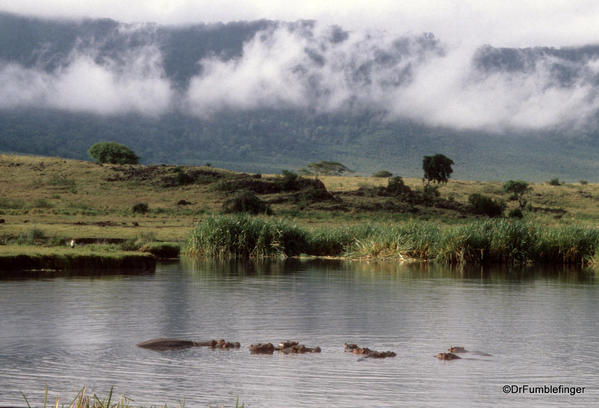 (Hippo pool, Ngorongoro Crater, Tanzania)
(Hippo pool, Ngorongoro Crater, Tanzania)
The journey to the Ngorongoro Crater:
From Serengeti National Park we drove overland heading east towards the 3,200-square-mile Ngorongoro Conservation Area, a UNESCO World Heritage Site which includes the crater itself, the eastern part of the Serengeti Plains as well as Maasai tribal land. The ride is very long and v-e-r-y rough, but spotting game along the way makes the journey go faster. We cross the famous Rift Valley and Olduvai gorge, to which we’ll return later for a visit. The rim of the Ngorongoro Crater dominates the landscape ahead and is almost 20 km wide. At one time it was a typical volcanic cone, the top of which long ago collapsed inward (similar to Crater Lake in Oregon), forming a unique landscape. The climax of your drive is when you reach the rim of Ngorongoro Crater and take in its panoramic view. Some 2000 feet below you, on the crater’s 105-square-mile floor, lives Africa’s largest permanent (i.e. non-migrating) concentration of wildlife, a few soda (alkaline) lakes, and grasslands. There are only two roads that allow access to the crater, the entrance to both locked at dusk. Anyone found in the crater after dark will be shot dead as a poacher. It is because of this strict policy that the rarer species of the Crater (especially black rhinos) survive.
(Black Rhino, Ngorongoro Crater, Tanzania)
Our home for three nights was a mobile tented safari camp on the crater’s rim. The tents had cozy warm beds (it gets surprisingly chilly at night) and an en-suite (though primitive) shower and toilet. We shared meals and “happy hour” in a spacious dining tent with our fellow travelers and guides, the food always tastefully prepared. As we were near the equator, we enjoyed a number of magnificent sunsets around 6 pm, then we’d chat well into the night.
(Our camp, sleeping tents above, dining tent below. This was camping at its finest!)
Game-viewing in the Ngorongoro Crater:
As on the Serengeti, we had two game drives each day, one at dawn and the other before dusk, but these drives were longer than those of the Serengeti because there were always some animals around and given the relative lack of trees, easy to spot. The crater area is large enough so there’s lots to explore. Three days was a good amount of time to spend here and if you are here during the off-season, when the Million Animal Migration isn’t ongoing, then I’d spend much less time on the Serengeti and more time here.
(Wildebeest herd, Ngorongoro Crater. We were there during calving season)
The wildlife you’ll encounter here is basically the same as you’ll find in Serengeti National Park. Because of the elevation of its rim, clouds moving from the Indian Ocean are pushed high and often dump their moisture into the crater. As such, there is year round green grass and the animals don’t need to migrate for grazing as they do in the Million Animal Migration. This has caused some different behaviors to emerge that you don’t see on the Serengeti. For example, the wildebeest males make mounds of dirt and stand on them at the center of their clearly defined territories, inviting the ladies to come play and chasing other males away; they do not migrate.
(Buffalo herd, Ngorongoro Crater)
We saw all the large animals of Africa here, including large numbers of buffalo, some elephant, but especially prized were our encounters with 4 black rhinos and 2 leopards. The leopards were high up in some gigantic trees but with binoculars we could easily study these beautiful cats. Lions were plentiful and easy to watch as they rested and hunted. Also there were large flocks of flamingos in the soda lakes, especially spectacular to see as they took flight, a flurry of pink and black wings. We also see large flocks of crowned cranes and sacred ibis. There were thousands of recently born wildebeest and zebra calves, adding to our animal viewing pleasures!
(Lioness, Ngorongoro Crater, Tanzania)
(Flamingos flying over a soda lake, Ngorongoro Crater)
The Olduvai Gorge and Rift Valley:
During our stay at the Ngorongoro Crater, we did undertook a days journey (essentially the time between game drives) to visit nearby Olduvai Gorge and a traditional Maasai tribal village.
(Olduvai Gorge, Tanzania)
The Olduvai Gorge is a steep ravine in East Africa’s Great Rift Valley. It’s in the eastern Serengeti, not far from the Ngorongoro Crater. The Gorge is an extremely important paleo-anthropological site which has been instrumental in furthering the understanding of early human history. It may be the oldest site occupied by humanoids in the world, with evidence dating back several million years. Old skulls, stone tools, even ancient fossilized footprints have been found in the region.
It was at this site that Louis and Mary Leakey did much of their field research. The Leakey family is closely tied to the 20th century history of East Africa, including important efforts to preserve the wildlife and terrain of the Serengeti. Their work and discoveries are highly important to science but beyond the scope of this blog post. The interested reader is encouraged to visit the family’s website.
There is an interesting Visitor Center at the Archaeological site, with English language signage and displays highlighting some of the discoveries made in the area. It was a few hours well spent.
(Maasai Boma, Tanzania)
Equally interesting was a visit to a Maasai tribal village, or Boma. This region has been the traditional home of the Maasai for millennia. The Maasai are a tall distinguished people who are herdsmen, living off the milk of their animals (a favorite and nutritious beverage is mixing fresh cow’s blood into milk). Many still live in small villages. The men like to dress in very bright red robes and we often see them herding goats and cattle
(Maasai women, singing a traditional song)
Our guide, Alex LeMunge, coordinated our visit to the Boma with the leader of the one village (which involved an exchange of a rather thick stack of currency) and we were invited into their complex. The people were warm and friendly, but they live in very primitive conditions. Their huts are made of dried dung and clay smeared over a frame of sticks. There is one woman/family to a hut, the men often having multiple wives and living in different huts on different days Cattle are brought into the village at night and a wall of dead thorn bushes forms a barricade to keep out predators. We crawled into their huts (poorly lite and not for the claustrophobic), enjoyed the women singing to us, and found the dancing and high jumping antics of the men to be most impressive (I can see where the “slam dunk” of basketball had its origin). They sold simple souvenirs including spears and cowhide shields. It was definitely a fascinating glimpse into another culture.
(Maasai men, jumping)
*****************************************************************
For an extended high resolution slide show of the Ngorongoro Crater, please go to this link. The slide show is at the bottom of the post. Click on the right sided icon of the slideshow's toolbar for full screen enlargements.
*****************************************************************


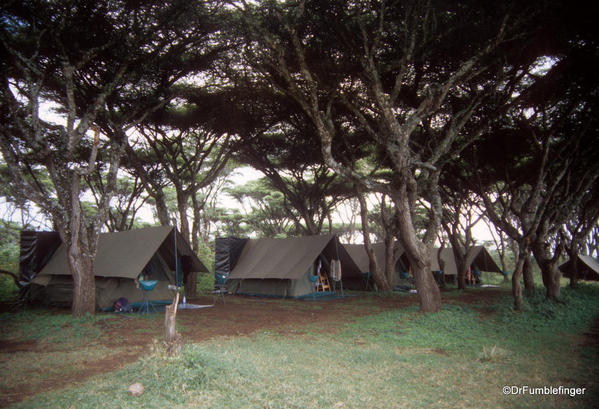
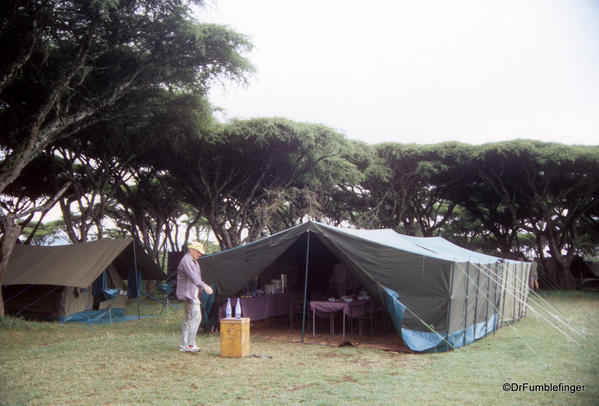


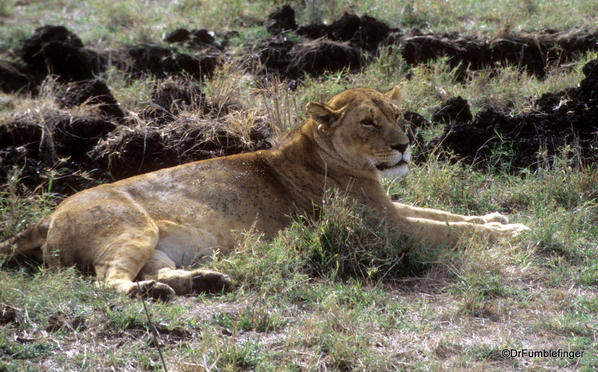

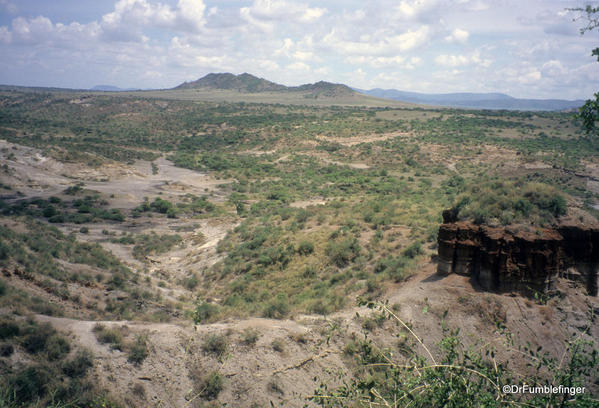
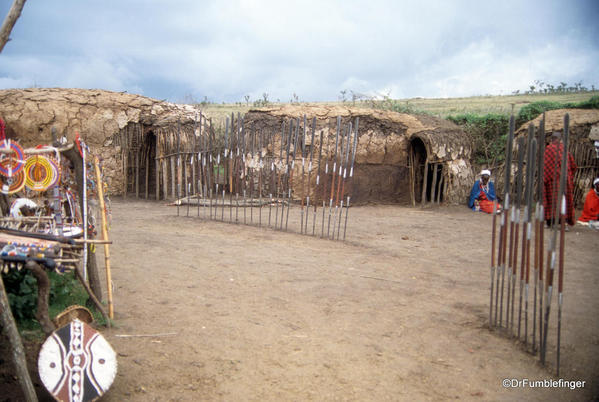
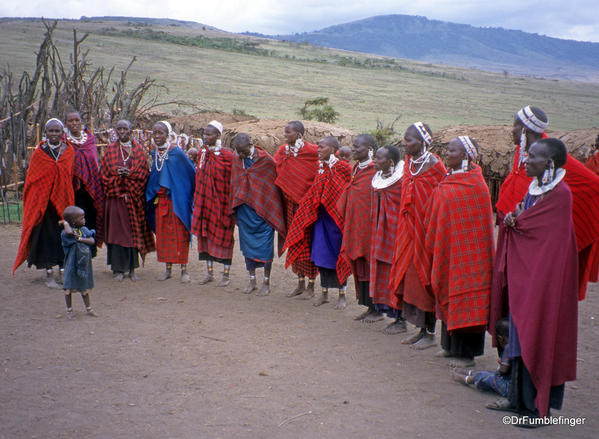
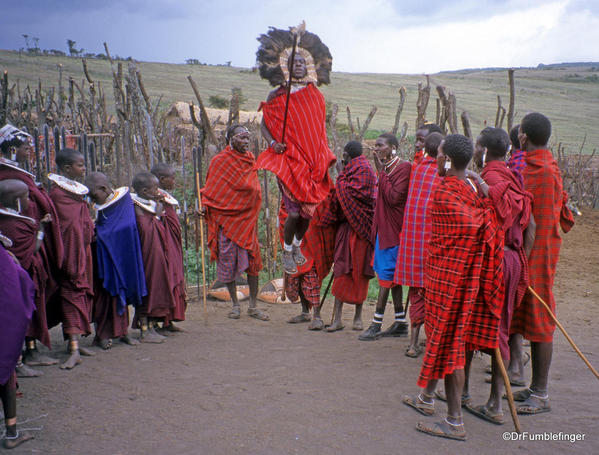

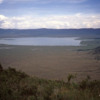
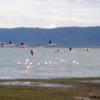
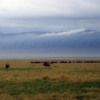
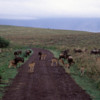
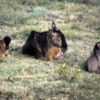
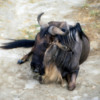
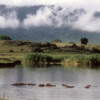
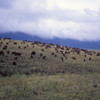
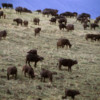

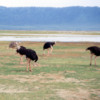
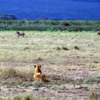
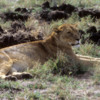
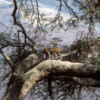
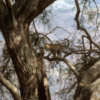
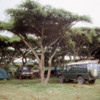
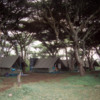
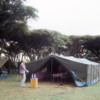
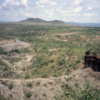
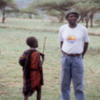
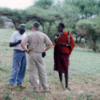
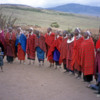
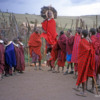
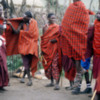
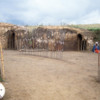
Comments (0)